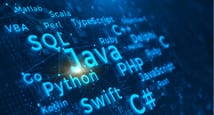- How To Download Your Free Binary And Subnetting Workbook!
- Session 1: Defining Networking
- Session 2: The OSI Networking Model
- Session 3: The TCP/IP Networking Model
- Session 4: Always Look On The Physical Side Of Life
- Session 5: Crossover Cables and Other Delights
CCNA 200-301 Video Boot Camp with Chris Bryant
Quick Facts
| particular | details | |||
|---|---|---|---|---|
|
Medium of instructions
English
|
Mode of learning
Self study
|
Mode of Delivery
Video and Text Based
|
Course overview
CCNA 200-301 Video Boot Camp with Chris Bryant Course is a short certificate programme developed by Chris Bryant to help the learners prepare for the CCNA (Cisco Certified Network Associate) 200-301 exam by providing deep knowledge on every subject. In this course, the students will be able to cover all the gamut of aspects needed for the CCNA certification test such as Networking, Switching, Spanning-Tree Protocol, EtherChannel, Virtual LANs (VLANs), the VLAN Trunking Protocol (VTP) and much more. The interested candidates can enrol in the CCNA 200-301 Video Boot Camp with Chris Bryant Online Course, the online training by Udemy, after providing the Udemy-demanded fee of Rs 1,280.
By enrolling in the CCNA 200-301 Video Boot Camp with Chris Bryant Certification, the learners will have the familiarity with Static Routing, RIP & EIGRP, OSPF, Wireless Routing and a lot more. This programme will enable the learners to become certified professionals and find better job opportunities in the field.
The highlights
- Online course
- Downloadable resources
- Full lifetime access
- Access on mobile and TV
- Certificate of completion
- English videos
- 30-Day Money-Back Guarantee
Program offerings
- 32 hours on-demand video
- 23 downloadable resources
- Full lifetime access
- Access on mobile and tv
- Certificate of completion
- English videos
Course and certificate fees
Fees information
certificate availability
Yes
certificate providing authority
Udemy
What you will learn
After the completion of CCNA 200-301 Video Boot Camp with Chris Bryant Online Certification, the learners will be able to have a deep understanding of all the gamut of topics needed to pass the CCNA certification test including the Spanning Tree Protocol, Binary, VLAN Trunking Protocol, Wildcard Masking and much more.
The syllabus
Section 1: An Introduction to Networking
Section 2: An Introduction To Switching
- Session 1: Collision Domains and CSMA/CD
- Session 2: Handling Broadcasts
- Session 3: The Move To Switches
- Session 4: Building The MAC Address Table (Theory)
- Session 5: Building The MAC Address Table (Walkthrough)
- Session 6: The Joy Of Dynamic MAC Table Entries
- Session 7 Hex , Hex Conversions, And The Admins Who Love Them
Section 3: Fundamental Switch Configs and Virtual LANs (VLANs)
- Session 1: Initializing The Switch
- Session 2: The Configuration Modes
- Session 3: The "logging synch" and "exec-timeout" Commands
- Session 4: VLAN Theory
- Session 5: Running VLANs On Cisco Switches
- Session 6: Configuring VLANs
- Session 7: The Trunking Protocols
- Session 8: The Trunking Modes
- Session 9: Working With DTP
- Session 10: Per-VLAN Traffic Filtering I
- Session 11: Per-VLAN Traffic Filtering II
- Session 12: The Dreaded VLAN.DAT File
The VLAN Trunking Protocol (VTP)
- Session 1: Why VTP?
- Session 2: VTP Configuration Numbers
- Session 3: VTP Pruning
The Spanning Tree Protocol
- Session 1: Why STP?
- Session 2: Introduction To BPDUs
- Session 3: The STP Port States
- Session 4: Root Bridge Election Walkthrough
- Session 5: Spotting Root Bridges In The Wild
- Session 6: The Timers
- Session 7: Port Costs and Root Costs
- Session 8: Picking The Root Port
- Session 9: Picking The Designated Port
- Session 10: STP And Slower LInks
- Session 11: Changing Port Costs
- Session 12: Per-VLAN Load Balancing
- Session 13: Changing Root Bridge Election Results
- Session 14: Configuring Secondary Roots
- Session 15: Multiple Root Bridges
- Session 16: Portfast
- Session 17: Root Guard
- Session 18: BPDU Guard
- Session 19: The Errdisable Recovery Feature
- Session 20: Introduction To RSTP
- Session 21: RSTP And Multiple Trunks
- Session 22: STP Nuts and Bolts
- Session 23: Etherchannels
- Session 24: Etherchannel Static Build
- Session 25: Losing Ports In An Existing Etherchannel
- Session 26: Etherchannel Negotiations
- Session 27: PAgP In Action
- Session 28: LACP In Action
- Session 29: How To Wreck An Etherchannel
- Section 30: When And Why To Change The Native VLAN
Binary and Subnetting Mastery
- Session 1: Binary-To-Decimal Conversions
- Session 2: Decimal-To-Binary Conversions
- Session 3: Calculating The Number Of Valid Subnets
- Session 4: Calculating The Number Of Valid Hosts
- Session 5: Determining The Subnet Of A Given IP Address
- Session 6: Determining The Broadcast Address And Range Of Valid Addresses
- Session 7: We Subnet!
An Introduction To Routing
- Session 1: Binary Fundamentals
- Session 2: The IP Address Classes
- Session 3: Routing Walkthrough
- Session 4: Second Routing Walkthrough
Static Routing
- Session 1: Loopback Interfaces and Hub-And-Spoke Networks
- Session 2: Our Initial IP Routing Table
- Session 3: The Static Lab Begins!
- Session 4: The Problem Isn't Always Local
- Session 5: Why Not Just Go Static?
Wildcard Masking
- Wildcard Masking: The One And Only!
Introduction To RIP And EIGRP
- Session 1: RIP Introductions
- Session 2: RIP Lab
- Session 3: EIGRP Fundamentals
- Session 4: EIGRP Lab
- Session 5: Administrative Distance
- Session 6: Floating Static Route Lab Begins
- Session 7: Floating Static Route Lab Concludes
OSPF And Link-State Protocol Behaviors
- Session 1: It Begins!
- Session 2: Adjacencies and Hellos
- Session 3: The Network Mask Mixup Adjacency Lab
- Session 4: Adjacency States and Debugs
- Session 5: LSA Sequence Numbers
- Session 6: The DR and BDR (Plus RID Determination!)
- Session 6A: The Conclusion Of Session 6
- Session 7: Hello and Dead Time Lab
- Session 8: The Build Begins!
- Session 9: Configuring An NBMA Network
- Session 10: Configuring A Point-to-Point Link On Cisco Routers
- Session 11: Configuring An OSPF Point-to-Point Network
- Session 12: Adding Loopbacks And Area 34
- Session 13: Building A Virtual Link
- Session 14: Using OSPF Passive Interfaces
- Session 15: A Real-World Passive Interface Tip
- Session 16: A Word About Areas
- Session 17: Default-Information Originate (Or Not)
- Session 18: A Little Stub Routing, A Little More Action
- Session 19: The OSPF Router Types
- Session 20: Multiple DROthers On A Broadcast Segment
- Session 21: Interface Cost Determination
- Session 22: The Auto-Cost Reference Bandwidth Command
- Session 23: The "Bandwidth" And "IP OSPF Cost" Commands
- Session 24: Full Path Cost Determination
- Session 25: Load Balancing and Multiple Processes On A Single Router
Introduction To Wireless Networking
- Session 1: The Basic Service Set
- Session 2: The Extended Service Set and The Distribution System
- Session 3: Bridges and Repeaters?
- Session 4: Intro To Wireless Security
- Session 5: More Wireless Security (EAP)
IP Version 6
- Session 1: Address Compression
- Session 2: Why IPv6?
- Session 3: The Global Routing Prefix
- Session 4: Running IPv6 On Cisco Routers
- Session 5: The Link Local Address
- Session 6: The Interface Identifier
- Session 7: The EUI-64 Option
- Session 8: Multicast Groups
- Session 9: The Neighbor Discovery Protocol (NDP)
- Session 10: DHCPv6
- Session 11: Smart Stuff My DAD Says
- Session 12: Static Routing Syntax And Such
- Session 13: Static Routing Labs
- Session 14: Slightly Tricky Static Routing
- Session 15: Static Routes and Host Routes
- Session 16: Bonus OSPV3 Work -- Comparisons and Operations
- Session 17: Bonus OSPFV3 Work -- The Lab Begins
- Session 18: Bonus OSPFV3 Work - The Lab Concludes
Layer Three Switches
- Session 1: Router-On-A-Stick Configuration and Theory
- Session 2: Router-On-A-Stick Lab
- Session 3: SVIs On A L3 Switch
- Session 4: Routed Ports
- Session 5: Layer 3 Etherchanneling
- Session 6: Router-On-A-Stick And The Native VLAN
Access Lists
- Session 1: The Implicit Deny
- Session 2: The Standard ACL Lab Begins
- Session 3: The Standard ACL Lab Concludes
- Session 4: The Extended ACL Lab
- Session 5: Using "Host" And "Any"
- Session 6: Law, Order, and ACLs
- Session 7: The Sequencing Lab
- Session 8: Named ACLs
- Session 9: Restricting Telnet Access With ACLs
- Session 10: Where To Put 'Em
- Session 11: Remarks About Remarks
Network Security Fundamentals
- Session 1: Introduction To Port Security
- Session 2: Port Security Intro Lab Begins
- Session 3: Port Security Intro Lab Concludes; Violation Modes Covered
- Session 4: Port Security Aging
- Session 5: Port Security Sticky Addresses
- Session 6: The Errdisable Recovery Feature
- Session 7: RAM, ROM, NVRAM, and Flash
- Session 8: Setup Mode
- Session 9: Lab Commands Old And New
- Session 10: The Enable Secret and Enable Password
- Session 11: Console Port Security (Single Password)
- Session 12: Console Port Security (Username / Password Database)
- Session 13: Telnet Lab I
- Session 14: Telnet Session II
- Session 15: SSH Theory / SSH Lab Begins
- Session 16: SSH Lab Work
- Session 17: Restricting SSH And Telnet Usage
- Session 18: Telnet - SSH Review
- Session 19: Intro To VPNs And IPSec
- Session 20: The Five Success Steps In A VPN Build
- Session 21: ISAKMP Policy Configuration
- Session 22: IKE Phase 2 Configuration
- Session 23: Crypto Map Theory
- Session 24:: Crypto Map Writing And Application
- Session 25: The VPN Build Test
- Session 26: Introduction To Firewalls
Section 17: Network Architecture
- Session 1: Fundamental Network Topologies
- Session 2: LAN Topologies
- Session 3: WAN Topologies
- Session 4: Intro To MPLS and MPLS VPNs
- Session 5: Intro To Cloud Computing I
- Session 6: Cloud Computing II
- Session 7: Intro To Controller-Based Networking
- Session 8: The SBI, NBI, And ACI
- Session 9: SDN Benefit Review
- Section 10: Introduction To Software-Defined Access
- Session 11: The LISP Process
- Session 12: REST APIs
- Session 13: Intro to JSON
- Session 14: Ansible, Puppet, And Chef!
Section 18: DNS, DHCP, And ARP
- Session 1: DNS And ARP Fundamentals
- Session 2: DHCP Fundamentals
- Session 3: The DHCP Relay Agent
- Session 4: Configuring A Cisco Device As DHCP Client Or Server
Section 19: DHCP Snooping And Dynamic ARP Inspection
- Session 1: DHCP Attacks And DHCP Snooping
- Session 2: DHCP Snooping Lab Begins
- Session 3: DHCP Snooping Lab Concludes
- Session 4: Dynamic ARP Inspection Theory
- Session 5: Dynamic ARP Inspection Lab
- Session 6: Dynamic ARP Inspection Options Lab
Section 20: IP Services
- Session 1: Why NTP?
- Session 2: NTP Lab Begins
- Session 3: NTP Lab Concludes
- Session 3A: Bonus NTP Video (What If...)
- Session 4: Logging Me, Logging You
- Session 5: Syslog and Timestamps
- Session 6: CDP, Actually (And LLDP Theory!)
- Session 7: LLDP Lab Work
- Session 8: FTP, TFTP, The COPY Command, And The VERIFY Command
- Session 9: An Introduction To SNMP
Section 21: TCP And UDP
- Session 1: The Fundamentals
- Session 2: Sequence Numbers and Error Recovery
- Session 3: Flow Control and Windowing
- Session 4: Multiplexing, Well-Known Port Numbers, and Four-Way Handshakes (!)
Section 22: Network Address Translation
- Session 1: NAT Fundamentals
- Session 2: Static NAT Lab Begins
- Session 3: Static NAT Lab Concludes
- Session 4: Dynamic NAT Theory And Lab
- Session 5: Port Address Translation Theory And Lab
Section 23: Introduction To Quality of Service (QoS)
- Session 1: Why QoS? Plus -- Classification and Marking!
- Session 1A: CoS And DSCP
- Session 2: Trust Boundaries, Shaping, and Policing Traffic
- Session 3: Queuing Strategies
Section 24: First-Hop Redundancy Protocols
- Session 1: HSRP FUNdamentals
- Session 2: HSRP Lab Begins - IP And MAC Address Assignment
- Session 3: HSRP Lab - Changing The Active Router Selection
- Session 4: Messin' With HSRP -- Load Balacing Lab and HSRP States
- Session 5: HSRP Interface Tracking


 Brochure
Brochure Enquire
Enquire











